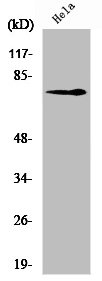p75 NGF Receptor / CD271 antibody [ME20.4]
GTX10495
ApplicationsFlow Cytometry, ImmunoPrecipitation, Western Blot, ELISA, ImmunoHistoChemistry, ImmunoHistoChemistry Frozen, ImmunoHistoChemistry Paraffin, Neutralisation/Blocking, RadioImmunoAssay
Product group Antibodies
TargetNGFR
Overview
- SupplierGeneTex
- Product Namep75 NGF Receptor / CD271 antibody [ME20.4]
- Delivery Days Customer9
- Application Supplier NoteIHC-P: 1:1,000. *Optimal dilutions/concentrations should be determined by the researcher.Not tested in other applications.
- ApplicationsFlow Cytometry, ImmunoPrecipitation, Western Blot, ELISA, ImmunoHistoChemistry, ImmunoHistoChemistry Frozen, ImmunoHistoChemistry Paraffin, Neutralisation/Blocking, RadioImmunoAssay
- CertificationResearch Use Only
- ClonalityMonoclonal
- Clone IDME20.4
- ConjugateUnconjugated
- Gene ID4804
- Target nameNGFR
- Target descriptionnerve growth factor receptor
- Target synonymsCD271, Gp80-LNGFR, TNFRSF16, p75(NTR), p75NTR, tumor necrosis factor receptor superfamily member 16, NGF receptor, TNFR superfamily, member 16, low affinity neurotrophin receptor p75NTR, low-affinity nerve growth factor receptor, low-affinity nerve growth factor receptor p75NGFR, low-affinity nerve growth factor receptor p75NGR, p75 ICD
- HostMouse
- IsotypeIgG1
- Protein IDP08138
- Protein NameTumor necrosis factor receptor superfamily member 16
- Scientific DescriptionNeurotrophic factors control the survival, differentiation and maintenance of neurons in the peripheral and central nervous systems, and of other neural crest-derived cell types. Developing sympathetic neurons are absolutely dependent upon nerve growth factor (NGF) during the period of target competition in vivo. During this neonatal development window, NGF is believed to bind to its cognate receptors on the terminals of sympathetic neurons and to regulate their level of target innervation by two primary mechanisms. First, NGF stimulates terminal growth of sympathetic neurons thereby regulating the level of target innervation. Second, NGF, in conjugation with other neurotrophins, serves as discriminator allowing the elimination of neurons that have failed to sequester adequate target territory. Neurotrophic factors, like all polypeptide hormones, deliver their message to the cell interior via interaction with cell surface receptors. They interact with multicomponent receptors consisting of several distinct protein subunits. NGF binds to two different receptors; the low affinity surface receptor p75 neurotrophin receptor (also known as NGFR p75, p75NGFR, p75NTR) and the receptor tyrosine kinase TrkA, each with distinct signaling capabilities. Although multimeric receptor complexes and functional interactions between both receptors have been observed, it is clear that NGF can bind to and elicit biological actions through each of these two receptors independently. Other neurotrophins (GDNF, NT3 and NT4) are able to bind to NGFR p75 with similar affinities. However, the receptor is in fact able to distinguish among the different neurotrophins. Thus, for instance, NGF but not BDNF or NT3, activates a downstream signaling pathway through the receptor in Schwann cells and oligodendrocytes. The human NGFR p75 has a hydrophobic signal sequence, a single N-linked glycosylation site, four cysteine-rich repeat units of approximately 40 amino acids in the extracellular domain, a serine and threonine-rich region which might be O-linked glycosylated, a single transmembrane domain, and a 155 amino acid cytoplasmic domain. The extracellular domain of NGFR p75 has homology to the extracellular domains of B-lymphocyte activation molecule Bp50 and tumor necrosis factor receptor. It appears that NGFR p75 enhances the NGF binding affinity of the proto-oncogene product p140trk and also may modulate the kinase activity of p140trk and play a role in signal transducton. In addition, like other members of this family of receptors, NGFR p75 signals on its own and mediates apoptosis in certain cellular contexts. NGFR p75 contains a ideath domaini motif, which has been implicated in binding or activating death effector molecules. Specifically, neurotrophin binding to NGFR p75 stimulates generation of ceramide, activation and translocation of NF-kappaB to the nucleus, and enhancement of Jun kinase (JNK) activity. NGF and NGFR p75 have been the subject of extensive studies. Antibodies reacting specifically with NGFR p75 are useful tools in the detection and characterization of NGFR p75, to enhance our understanding of a wide range of phenomena in the development, plasticity and repair of the nervous system.
- Storage Instruction-20°C or -80°C,2°C to 8°C
- UNSPSC12352203


![IHC-P analysis of human melanoma tissue using GTX17697 p75 NGF Receptor / CD271 antibody [NGFR/1997R].](https://www.genetex.com/upload/website/prouct_img/normal/GTX17697/GTX17697_20200115_IHC-P_777_w_23060620_517.webp)
![IHC-P analysis of human adrenal gland tissue using GTX17979 p75 NGF Receptor / CD271 antibody [NGFR/1964].](https://www.genetex.com/upload/website/prouct_img/normal/GTX17979/GTX17979_20200115_IHC-P_265_w_23060620_596.webp)
![IHC-P analysis of human cervix tissue using GTX57176 p75 NGF Receptor / CD271 antibody [IHC637]](https://www.genetex.com/upload/website/prouct_img/normal/GTX57176/GTX57176_20180619_IHC-P_w_23061123_758.webp)
![FACS analysis of REH cells using GTX00556-02 p75 NGF Receptor / CD271 antibody [NGFR5] (Biotin).](https://www.genetex.com/upload/website/prouct_img/normal/GTX00556-02/GTX00556-02_20191025_AP_006_88_w_23053121_456.webp)
![FACS analysis of REH cells using GTX00556-07 p75 NGF Receptor / CD271 antibody [NGFR5] (APC).](https://www.genetex.com/upload/website/prouct_img/normal/GTX00556-07/GTX00556-07_20191025_AP_006_89_w_23053121_501.webp)